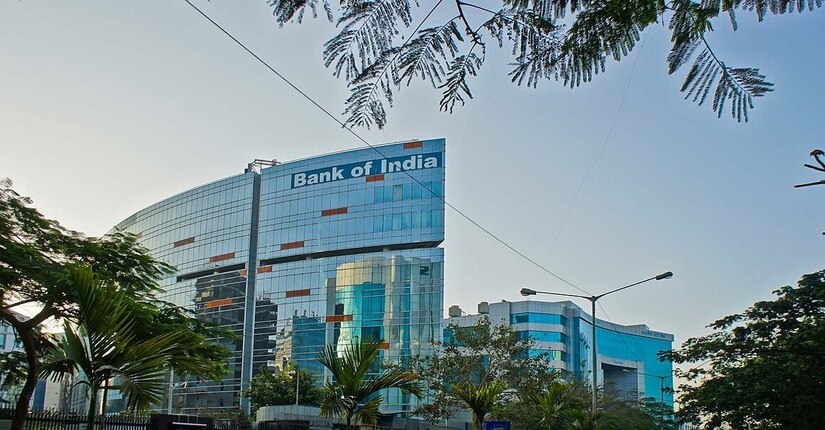The Bank of India (BOI), one of India’s largest public sector banks, has been at the heart of a major debate regarding its role, performance, and future in India’s rapidly evolving banking sector. The conversation has only grown louder with the country’s increasing focus on economic reforms, digital banking, and financial inclusion. Both proponents and critics of the bank make strong points in support of their views, and understanding both sides of the debate is crucial for anyone interested in India’s banking sector.
The Proponents of BOI: A Vital Institution in India’s Financial Landscape
Those in favor of Bank of India often argue that, despite the challenges it faces, the institution plays a critical role in the economic framework of the country. Here are some of the key points made by its supporters:
1. Legacy and National Importance
Established in 1906, Bank of India is one of the oldest and most prominent public sector banks in India. Over the years, it has built a strong legacy and a wide network across the country. It serves millions of customers, from individuals and small businesses to large enterprises. Its long history provides the bank with a sense of trust and reliability that customers are often unwilling to relinquish.
2. Widespread Reach and Inclusion
With branches across the country and a presence in several foreign markets, BOI’s reach is unparalleled. Its wide network is a significant advantage, especially in rural and underserved regions where financial inclusion remains a challenge. The bank has been a key player in delivering banking services to populations that might otherwise be left out of the formal banking system. Through various government schemes such as Jan Dhan Yojana, Pradhan Mantri Mudra Yojana (PMMY), and PMGDISHA, BOI has supported financial inclusion efforts by extending credit to low-income households and small enterprises.
3. Public Sector Bank Advantage
As a public sector entity, Bank of India benefits from government backing, which helps it weather economic downturns and periods of high non-performing assets (NPAs). Public sector banks like BOI are typically seen as more stable and less risky than their private sector counterparts, especially in times of financial crisis. This stability is crucial for sustaining India’s financial ecosystem, particularly when smaller private banks may lack the resources or the trust of the public during turbulent times.
4. Commitment to Digital Transformation
Despite challenges, BOI has shown a commitment to embracing digital banking. In a bid to stay competitive, it has invested heavily in technology, launching mobile banking apps, digital wallets, and online services that cater to the tech-savvy population. These efforts are in line with the government’s push for a Digital India and have allowed BOI to expand its customer base, particularly among the younger, more digitally inclined demographic.
5. Contributing to National Growth
BOI is also seen as an integral part of India’s financial ecosystem in terms of supporting the country’s growth. Through financing key industries and sectors like agriculture, infrastructure, and education, BOI plays a crucial role in India’s economic development. The bank’s contribution to the government’s fiscal policies, especially with regard to loan disbursement in priority sectors, has been instrumental in pushing for inclusive and sustained economic growth.
The Critics of BOI: Concerns About Efficiency and Modernization
On the other hand, critics of Bank of India point out several areas where the bank has fallen short, especially in comparison with the growing private sector banks and the rapidly changing dynamics of the Indian banking sector. Here are some of the key criticisms:
1. High Non-Performing Assets (NPAs)
One of the biggest challenges for BOI has been the persistent problem of non-performing assets (NPAs). Despite efforts to clean up its balance sheet, the bank continues to grapple with a high ratio of bad loans. Critics argue that this is a result of poor lending practices and lack of rigorous risk management. While the Indian government has undertaken several measures to recapitalize public sector banks like BOI, the issue of NPAs continues to be a thorn in the bank’s side, affecting its profitability and overall stability.
2. Slow Adaptation to Technological Change
BOI lags behind private competitors in adopting technology, with outdated systems and processes hindering growth and efficiency..
3. Management and Governance Issues
Public sector banks like BOI face inefficiency due to political influence, poor governance, unstable leadership, and lack of accountability.
4. Comparative Lack of Innovation
BOI’s slow innovation and digital adoption hinder its ability to attract younger, tech-savvy clients compared to private banks.
5. Overdependence on Government Support
BOI’s dependence on government capital raises concerns, with growing pressure to become more autonomous as private banks strengthen.
Conclusion: A Bank at Crossroads
Wider conflicts within India’s banking industry are reflected in the discussion surrounding the function, advantages, and disadvantages of Bank of India. On the one hand, there is no denying BOI’s legacy, its importance in the national economy, and its contribution to financial inclusion. However, it is impossible to ignore the difficulties it faces, including NPAs, governance problems, and sluggish modernization. In the end, BOI’s future will rely on how well it handles these difficulties. It will take time to see whether the bank can actually compete in the dynamic and fiercely competitive banking industry, but its attempts to update its systems, lower non-performing assets, and adopt digital banking are positive first steps. As of right now, there are strong arguments on both sides of the BOI controversy.
